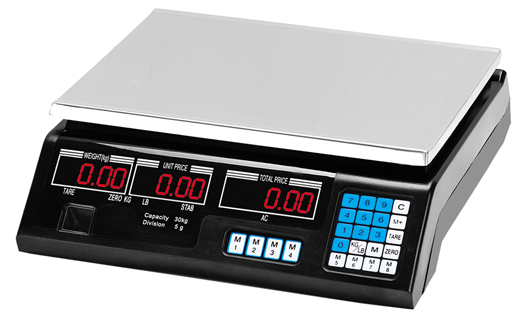The how’s and why’s of measuring weight have been around for centuries – going back to around 5000 BC, in fact. There has pretty much always been usage of units of measurement to determine weight or mass of objects for various reasons throughout history. It has been the main method of trade and commerce through history as well, and setting a standard that this trade revolves around is the earliest form of certification.
The beam scale was used by the Romans for the first time around 2000 years ago. They devised a method of measuring using a beam balanced on a pin or post with hanging pans or some receptacle from each end of the beam resembling a “T”. The items to be weighed go in the pan on one side of the beam, and units of known weight would go in the pan on the other side. When the beam was perfectly level, the unknown item’s weight would become known. For trade purposes, known weights would equate to a payment measure of some kind, depending on what type of commerce was being transacted.

History tells us that the wheat seed was the first unit of weight we know of. This “standard” was used to measure against other objects by the ancient Romans and Greeks. When crops would be brought for sale, they would be weighed against the known weight of wheat seed until the scales balanced and the transaction could be completed. A little later on, these standards and techniques were improved by introducing weights for gold, silver, and gems by the Arabic people. The hard part of using weight for commerce was that everyone everywhere used different weighing standards of measurement. This could make trade between one country and another difficult. King Edward I of England was the first to establish a common weight standard that other items could be measured against that was adopted by everyone in the trades and merchandising throughout the world.
After that, things got a bit easier in the world of commerce as nearly everyone was using the same units of measure to weigh their goods for sale. Scales themselves have evolved throughout the centuries in an ever increasing search for accuracy and precision. Richard Salter, from Great Britain, was the first to use a scale that was spring balanced in the 18th century. Today’s scales are all based on the spring balance idea.
The construction of a spring scale typically uses a combination of weight levers, some type of mechanism that senses weight, and a dial that can be enclosed in the scale’s casing or that could be mounted above the balancing plate of the scale. Scales come in various forms such as solar, electronic, digital, analog (as in the dial), and more. Scales must be calibrated to ensure they are accurately measuring weight as intended. The increment of measurement is part of this calibration process, and must match the intended use for the scale. Today’s scales are becoming more and more precise as our technology grows and allows for increase precision of the weight mechanisms.
If you are looking for a scale company, look no further than Central Carolina Scales. Central Carolina Scale, Inc is the leading provider of quality scales for all needs. For more information, please visit the website for product reviews and recommendations.
Central Carolina Scale is the leading provider of quality scales. If you need scales or weighing equipment recommendations please visit www.centralcarolinascale.com today and see what is currently available.
Leave a Reply